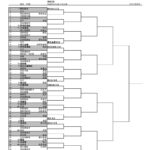Ge Hai (center) and students participate in a traditional culture exhibition at school
Ge Hai displays his artwork “Portrait of Guan Yu”
Ge Hai instructs students in their creative process
With just a piece of red paper, an engraving knife, and a pair of scissors, delicate flakes fall like snowflakes as fingers dance skillfully. In no time, a lifelike Yellow Crane Tower emerges before the students’ eyes. This magical craftsmanship comes from Ge Hai, who was born with a congenital foot disability.
Ge Hai is an inheritor of Wuhan paper-cutting, a national intangible cultural heritage, and the head of the “Ge Hai Paper-Cutting Research Studio” under the Wuhan Disabled Persons’ Federation. Since 2016, he has volunteered as a special education paper-cutting teacher at Wuhan First School for the Deaf, patiently and compassionately opening a door to this traditional craft for deaf students. Under his guidance, over 120 students have not only mastered paper-cutting skills but have also been deeply inspired by his optimistic spirit.
Fate once left an indelible mark on young Ge Hai, but with his engraving knife, he carved his own brilliant life story on red paper.
Breaking the Rules
From Self-Taught to Master
Born in 1977 into an ordinary working-class family in Wuhan, Ge Hai was diagnosed with a third-degree physical disability due to congenital limb impairment. Yet his parents’ encouragement—”Your heart can be more skillful than anyone else’s”—ignited his passion for art. In fifth grade, his parents scrimped to afford his sketch lessons at Wuhan Youth Palace, setting aside 50 yuan from their 200-yuan monthly income. Even in freezing winters, he persevered, warming his stiff hands before continuing to draw. Over four years, he wore down countless pencils and filled stacks of sketch paper, never wavering in his dedication to art.
In 1993, when his father passed away from a sudden brain tumor, 16-year-old Ge Hai had to drop out of school. He learned screen-printing and engraving from his father’s colleagues before moving to Nanjing at 17 to study glassmaking with his great-aunt. By day, he hauled glass despite his disability; by night, he practiced copying traditional paper-cut designs on old newspapers in the warehouse. Returning to Wuhan at 19, he worked at a clothing company but never abandoned his love for paper-cutting.
In 1998, Ge Hai attended the Hubei Paper-Cutting Association’s annual meeting with a portfolio of self-taught works. The association’s president, Liu Shibiao, was stunned: “Did you carve these? The technique and composition are too refined for a self-taught artist!” After confirming, Liu admitted Ge Hai as the youngest member, taking him under his wing.
Under mentorship, Ge Hai systematically studied traditional paper-cutting techniques, later blending Hubei and Wuhan styles into his own diverse, life-inspired creations. In 2003, he invented a multi-functional engraving knife and a wax carving board that stays pliable year-round. By 2010, he earned the title “Hubei Renowned Paper-Cutting Artist,” and in 2018, his month-long masterpiece “Portrait of Guan Yu” won top honors for its intricate craftsmanship.
Silent Blooms
A Knife Bridges Hearts
In 2015, Wuhan First School for the Deaf approached Ge Hai: “Our students want to learn paper-cutting, but regular teachers can’t guide them. Will you help?” He agreed immediately, but his first class left him nervous—20 silent children watched as a sign language interpreter introduced him.
“I stood frozen, unsure how to begin,” Ge Hai recalled. “Then I realized: if they can’t hear, I’ll speak through action.” He carved a simple flower, then gestured for a student to try. A girl hesitantly made uneven cuts, and Ge Hai gave a thumbs-up in sign language: “Great job!” Her radiant smile marked his first triumph.
Tailoring lessons, he taught zodiac designs to younger students and Peking Opera masks to older ones. Collaborating on complex pieces, they revived historical patterns, embodying his mantra: “Breathe life into tradition.” To simplify learning, he adapted six-fold symmetry instead of three-fold, avoiding tricky cutouts while boosting confidence.
Since 2016, students have created themed series—56 Ethnic Groups, WWII History, Military Games, and “Staying True to Our Mission”—blending culture, pride, and current events.
Star pupil Liu Sijia, fluent in sign language, assists classmates. When she struggled with “Thousand-Hand Guanyin,” Ge





